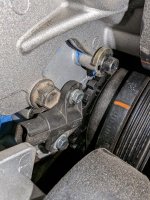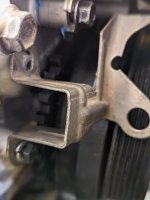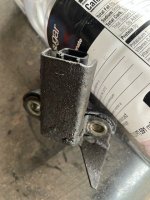I need to time my motor to 12° BTDC (I marked it with an orange line) and I have an explorer serpentine setup. The timing marks are on the harmonic balancer, and I have an article with a vague diagram of how to make a pointer to fit where the sensor goes.
My question is how do I determine exactly where the pointer should be?
Is the center of the hall effect sensor the pointer location?
My question is how do I determine exactly where the pointer should be?
Is the center of the hall effect sensor the pointer location?













